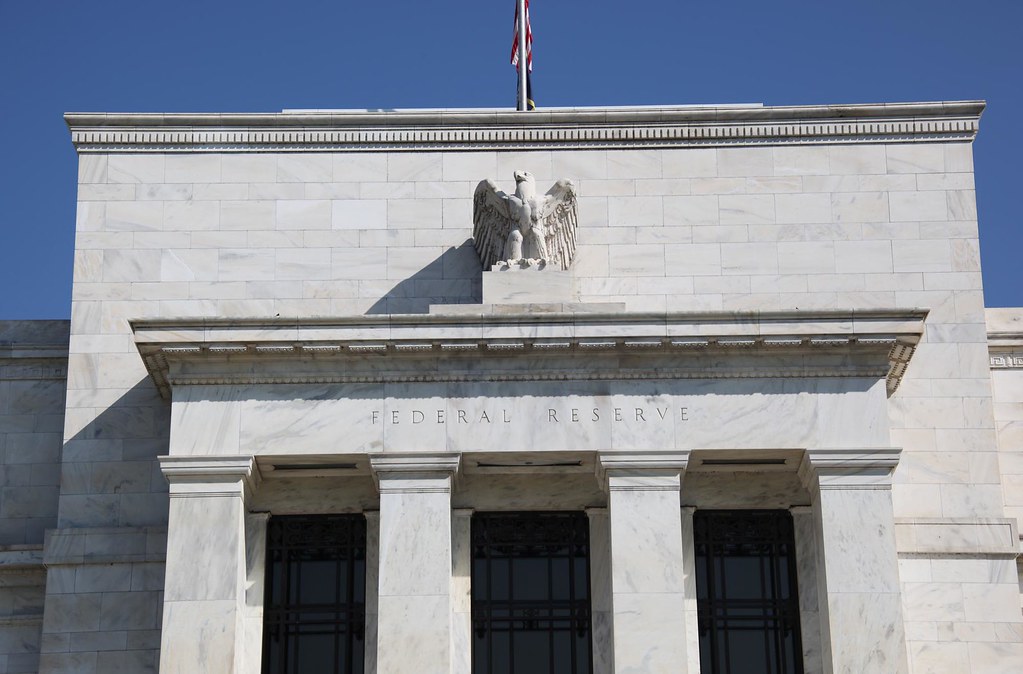Main Points :
- The Federal Reserve (FRB) initiated a 50 basis point rate cut, triggering a potential increase in Bitcoin investments.
- Bitcoin surged by over 8% following the rate cut, renewing hopes for a “soft landing” in the U.S. economy.
- Analysis from Kaiko suggests Bitcoin saw a 5.2% rise within 24 hours of the announcement.
- Derivative markets on platforms like Bybit, OKX, and Binance saw Bitcoin open interest increase by 12% to $12 billion.
- Despite similar rate cuts by the European Central Bank (ECB) and the Bank of England (BoE), Bitcoin’s reaction to these was muted compared to the U.S. Federal Reserve.
- Kaiko attributes the significant impact of the Fed’s rate cut on Bitcoin to the dominant role of dollar-denominated transactions in the cryptocurrency market.
- The increase in dollar liquidity is driving more investments into alternative assets such as Bitcoin.
The Federal Reserve’s Rate Cut and Bitcoin’s Surge
Last week, the Federal Reserve (FRB) made waves in the financial markets by announcing a 50 basis point rate cut, marking the start of a new monetary easing cycle. This move caused Bitcoin to surge over 8%, with renewed optimism that the U.S. economy may achieve a “soft landing”—a deceleration without tipping into recession. The market’s positive reaction to the Fed’s decision highlights the close relationship between traditional monetary policy and the cryptocurrency market.
Bitcoin’s Immediate Response to the Fed’s Announcement
According to Kaiko, a leading cryptocurrency data analysis firm, Bitcoin saw a substantial increase of 5.2% within just 24 hours of the Federal Reserve’s announcement. The surge occurred shortly after the statement was made at 6:00 PM UTC on September 18, with further buy-side pressure escalating in offshore exchanges, particularly as the Asian markets opened later in the evening.
This rapid upward movement in Bitcoin’s price demonstrates the sensitivity of cryptocurrency markets to global monetary policies, particularly when it involves the U.S. dollar, which is the dominant currency in Bitcoin trading.
Derivative Markets Respond with Increased Bitcoin Open Interest
In the days following the Fed’s announcement, derivative markets also showed significant activity. Platforms like Bybit, OKX, and Binance reported a 12% increase in Bitcoin’s open interest, which reached $12 billion between September 16 and 19. This uptick in open interest signals that investors are not only buying Bitcoin directly but also increasing their positions in derivative products, reflecting an optimistic outlook for Bitcoin’s short-term performance.
The Role of Dollar Dominance in Bitcoin Trading
While central banks around the world, including the European Central Bank (ECB) and the Bank of England (BoE), have also implemented rate cuts this year, Bitcoin’s response to these monetary policy changes has been relatively muted. Kaiko’s report attributes this to the fact that Bitcoin is primarily traded in U.S. dollars, and U.S. Federal Reserve policies have a disproportionately large impact on its price movements.
In August, over 93% of cryptocurrency transactions were conducted using the U.S. dollar or dollar-pegged stablecoins. The significant role of dollar liquidity in the cryptocurrency market means that changes in U.S. monetary policy, particularly those that affect the availability of dollars, directly influence Bitcoin prices more than similar actions taken by other central banks.

Dollar Liquidity and Bitcoin Investments: A Growing Trend
The increase in dollar liquidity following the Federal Reserve’s rate cut has spurred renewed interest in alternative assets like Bitcoin. With the U.S. dollar becoming more abundant, investors are seeking to diversify their portfolios, turning to Bitcoin as a hedge against inflation and traditional market risks. Kaiko’s analysis suggests that this liquidity influx is a key factor in driving up Bitcoin investments, as more institutional and retail investors recognize the potential for higher returns in the cryptocurrency space compared to traditional financial assets.
Bitcoin Poised for Growth Amid Increased Liquidity
The Federal Reserve’s rate cut, alongside a broader increase in dollar liquidity, appears to be accelerating Bitcoin investments. While Bitcoin has remained relatively indifferent to rate cuts by other central banks, the U.S. Fed’s policies, given the dominance of dollar-denominated transactions in the crypto market, have a clear and profound impact. As more investors seek alternatives to traditional assets, Bitcoin may continue to benefit from this influx of capital, positioning it for further growth as the U.S. economy navigates its monetary easing cycle.


